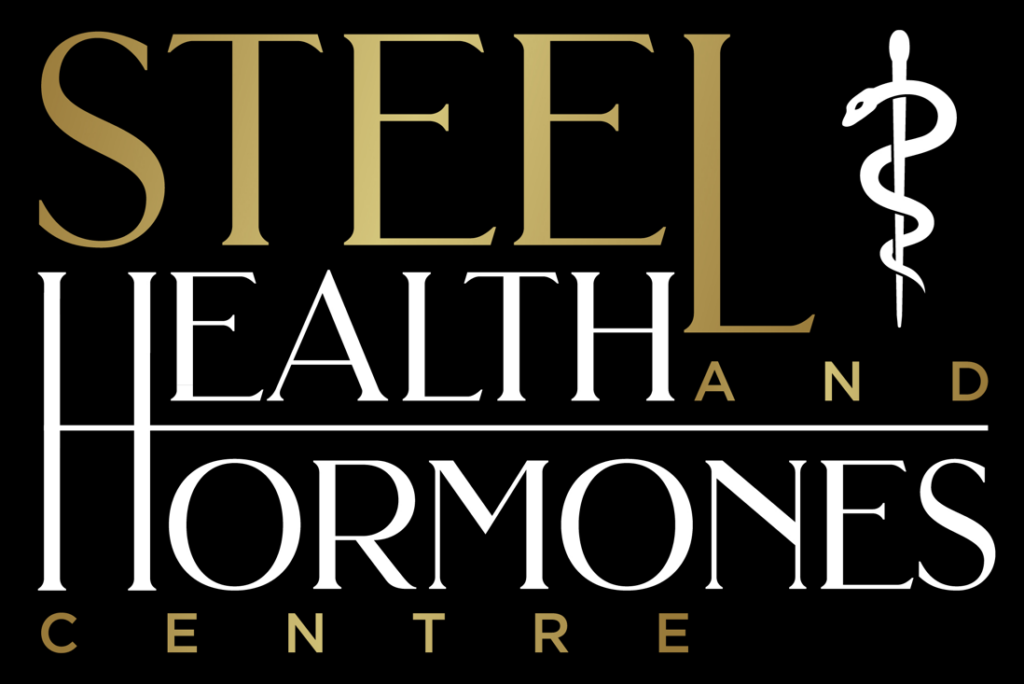Today we’re going to discuss hair loss on TRT.
We’ll cover the mechanism of action, who’s susceptible, potential treatment options, and possible side effects. If you’d rather watch than read, feel free to check out the video above.
Although I’m the owner of Steel Health and Hormones Centre, an HRT clinic located in Westmoreland and Allegheny County, Pennsylvania, I’m not a doctor. This content is for educational and entertainment purposes only and should not be used to treat or diagnose any medical condition. If you’re interested in working with a qualified medical professional, just fill out the contact form below — we’ll get back to you within 24 hours.
Who’s at risk?
Not all men are susceptible to androgenic alopecia. If you’re in your 40s, already on TRT, and rocking a Ronald Reagan hairline — odds are, you have nothing to worry about. But if you’re starting to see male pattern baldness accelerate after beginning TRT, this topic is for you.
What causes hair loss on TRT?
The key concept to understand is this: androgens — especially DHT — contribute to hair loss on the scalp. These androgens bind to androgen receptors in hair follicles, particularly in genetically susceptible areas like the hairline and crown. This binding shortens the anagen phase (the hair’s growth phase) and lengthens the telogen phase (the resting phase). Over time, this results in hair that becomes thinner, lighter, and eventually stops growing altogether.
All androgens can contribute to this process, but some are more aggressive than others. Testosterone, for example, can play a role — but in most men, the effect is mild unless they’re extremely sensitive.
The primary culprit? Dihydrotestosterone (DHT). DHT is a metabolite of testosterone, created when the enzyme 5-alpha reductase binds to a testosterone molecule and changes its structure. DHT is far more androgenic than testosterone, and the more androgenic the molecule, the more damaging it can be to your hairline.
What can you do about it?
The frontline strategy is to reduce how much testosterone is converted to DHT. This is done by blocking the enzyme responsible: 5-alpha reductase. The most popular medication for this is finasteride.
Finasteride significantly lowers DHT levels and can help prevent further hair loss. Some men even report regrowth.
In my experience, finasteride is well tolerated by most men. However, a small percentage experience side effects, which may include:
- Erectile dysfunction
- Reduced ability to orgasm
- Depression
Alternatives and non-hormonal support
For men who don’t tolerate finasteride or want to enhance the appearance of their hair further, a common option is minoxidil.
Minoxidil is a non-hormonal topical that works by lengthening the anagen phase — helping to offset the loss from androgenic miniaturization with increased growth in the treated area.
Minoxidil is also generally well tolerated, though possible side effects include:
- Low blood pressure
- Chest pain
- Heart palpitations
Other causes of hair loss
It’s important to note that not all hair loss is androgen-related. Another major cause? Thyroid dysfunction.
If suspected, a proper thyroid panel should include:
- TSH
- Free T3
- Free T4
- Reverse T3
- Selenium
- Iodine
An underperforming thyroid can contribute to hair shedding and thinning. Optimizing thyroid function can help restore healthy hair in the right patient.
Lifestyle still matters
No matter what route you take — medications, topicals, or functional medicine — lifestyle is still the foundation. Managing stress, eating nutrient-rich food, and exercising regularly all support healthy hair growth. Yes, the visible part of your hair is dead — but the follicle that grows it is very much alive.
If you’re interested in TRT, HRT, or bloodwork, fill out the contact form below, and we’ll be in touch within 24 hours.


